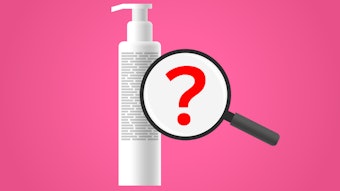The 7th Amendment to the Cosmetic Directive of the European Union (EU) has added 26 new ingredients to the “Annex III List of Substances Which Cosmetic Products Must Not Contain Except Subject to Restrictions and Conditions Laid Down.” These 26 ingredients are all contact allergens found in fragrances. Under comments 15 and 16, the EU states that in order to inform consumers who are allergic to these ingredients, it will mandate that these be listed on the ingredient declaration if they exceed certain minimum levels. These levels are 0.001% in leave-on prod– ucts and 0.01% in rinse-off products. Table 1 lists the 26 ingredients with their EU Reference number, names as listed, INCI designation if different, their CAS number and the Frequency of Use as reported by the FDA.
The current North American Contact Dermatitis Group (NACDG) tray used by dermatologists to check for allergic reactions has a fragrance mixture that includes these eight ingredients: cinnamic alcohol (EU-68), cinnamic aldehyde (EU- 76), hydroxycitronellal (EU-72), amylcinnamaldehyde (EU-67), geraniol (EU-78), eugenol (EU-71), isoeugenol (EU-73) and oakmoss (EU-91). I wonder if the NACDG tray might be expanded to include all of the 26 EU allergens. Cosmetic manufacturers have been contacting their fragrance suppliers and are asking about the levels of these 26 components. At a meeting held in October 2002 in England, Kristi Holt (Firmenich, UK) gave the following statistics based on a survey of 347 leave-on cosmetics in the UK:
• 3% of the products on the market contain more than 15 allergens;
• 24% contain 11-15 allergens;
• 50% contain 6-10 allergens;
• 22% contain 1-5 allergens;
• 1% contain no allergens.
In a similar survey, rinse-off products fared only slightly better. I have heard that some companies are asking their fragrance vendors to re-formulate and remove all of these 26 ingredients. That doesn’t make sense for two reasons. The fi rst is the enormous expense in replacing these commonly used, inexpensive compounds. The second is if you re– moved all 26 from all use, whatever replaces them will become the next 26 common allergens. It is far easier just to change your label.










